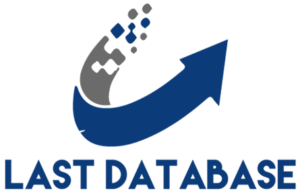Last year, 75% of nonprofits reported declining contributions , leaving more than half with less than three months of operating revenue and prompting many to cut staff, reduce services, or both.
At the same time, the nonprofit sector is increasingly competitive as a plethora of nonprofit ranking platforms have emerged, challenging organizations to be more transparent and accountable with their limited resources.
In other words, funders have less money to contribute to nonprofits and demand more bang for their buck.
While nonprofits can’t control donor behavior, they can maximize their appeal by demonstrating expertise, value, and transparency at every level. For nonprofits seeking to maximize their advocacy potential, exemplary governance is the answer. Here are three ways every nonprofit can improve these efforts today.
1. Commit to making expenses transparent
For thriving nonprofits, tracking and reporting expenses isn’t a boring accounting department obligation. It’s an all-in operational necessity that can improve efficiency and encourage future donor contributions.
For starters, buy bulk sms service mission drift and slow budget growth can easily reduce long-term effectiveness. Expense reporting allows board members and other leaders to assess spending priorities and provides an opportunity to realign budgets appropriately.
However, the potential remption amount is less than 1 billion yuan transparent expense reporting also helps nonprofits attract funding in an already challenging financial environment. For example, a recent survey by Funder Behavior found that more than 70% require insights into overhead costs before contributing to an organization.
Indeed, board members are taking note of this essential shift, which requires more comprehensive and accessible recordkeeping. To be successful, nonprofits will need to consider:
- a distributed workforce. Many nonprofits will continue to operate remotely, and expense reporting solutions need to be as flexible as this work arrangement.
- overworked teams. People have been working harder than ever this past year, leaving many feeling exhausted and burned out. That’s why nonprofits need a simple, seamless solution that doesn’t significantly add to the burden on their teams.
- agile implementation. Compliance standards, china business directory reporting requirements, and financial constraints change over time. That’s why nonprofits should pursue an expense reporting solution that can adapt with the organization.
Taken together, expenditure reporting is an effective first step towards exemplary governance, enabling further prioritisation.
2. Implement time tracking
Engaged staff, enthusiastic volunteers, and generous donors are the lifeblood of any nonprofit. Simply put, they are a nonprofit’s most valuable asset.
The past year has put a strain on these resources, making it even more important for nonprofits to optimize their efforts and effectively deploy their services. Time tracking allows leaders to evaluate these placements by assessing time spent on specific projects, priorities, and obligations.
For example, in March, the Council on Foundations released a pledge promising new funding opportunities. The Wall Street Journal reported that the foundation called for “reducing reporting requirements and administrative burdens for grantees.” Time tracking measures this commitment and other organizational requirements, allowing nonprofits to quantify these efforts to leadership and potential donors.
Similarly, time tracking initiatives allow nonprofits to demonstrate to donors their investment in the project, conveying value to attract new fundraising opportunities.
Of course, leaders need to be aware of the logistical constraints that go into time tracking efforts. Any solution needs to be minimally invasive, easy to implement, and widely accessible.
3. Review resource allocation
Even as the effects of the recent pandemic are waning, many people still face immense challenges. challenges , allowing nonprofits to serve their communities and constituencies in new and original ways. Many nonprofits have quickly pivoted, embracing new demands and obtaining innovative forms of funding.
Now is the time to revisit those efforts, ensuring that resources, including staff and volunteers, are allocated effectively, enabling nonprofits to achieve their mission without compromise. The post-COVID-19 landscape is entirely new, and nonprofits need the capacity to get moving.
In response, Harvard Business Review encourages nonprofits to reevaluate their core functionality through a series of essential questions, including:
- If we left today, who would care and why?
- What difference are we trying to make in our community?
- Who are our key members?
- What impact do they need us to have?
With these answers in mind, nonprofits can apply data from time and expense management initiatives to assess asset allocation to ensure critical services are not overlooked.






